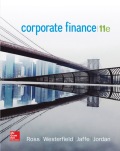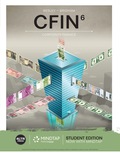
Concept explainers
a.
To determine: The
annually.
Future Value:
The value of assets on future based on some assumed growth rate at a specific period is termed as future value. It refers to the amount that is to be received in future on an investment with some returns on it after a specific period of time.
a.
Explanation of Solution
Given,
The amount to be invested today is $1,000.
Rate of interest is 7.5% per annum compounded annually.
Number of years is 6 years.
The formula to compute the future value is,
Where,
- FV is the future value.
- PV is the
present value . - r is the rate of inflation.
- n is the number of years.
Substitute $1,000 for PV, 7.5% for r and 6 for n in the above formula.
The future value when interest is compounded annually is $1,543.30.
Thus, the future value when interest is compounded annually is $1,543.30.
b.
To determine: The future value of $1,000 at 7.5% interest compounded semiannually.
b.
Explanation of Solution
Given,
The amount to be invested today is $1,000.
Rate of interest is 7.5% per annum compounded semiannually.
Number of years is 6 years.
The formula to compute the future value when interest is compounded semiannually is,
Where,
- FV is the future value.
- PV is the present value.
- r is the rate of inflation.
- n is the number of years.
Substitute $1,000 for PV, 7.5% for r and 6 for n in the above formula.
The future value when interest is compounded semiannually is $1,555.45.
Thus, the future value when interest is compounded semiannually is $1,555.45.
c.
To determine: The future value of $1,000 at 7.5% interest compounded monthly.
c.
Explanation of Solution
Given,
The amount to be invested today is $1,000.
Rate of interest is 7.5% per annum compounded monthly.
Number of years is 6 years.
The formula to calculate the future value when interest is compounded monthly is,
Where,
- FV is the future value.
- PV is the present value.
- r is the rate of inflation.
- n is the number of years.
Substitute $1,000 for PV, 7.5% for r and 6 for n in the above formula.
The future value when interest is compounded monthly is $1,566.12.
Thus, the future value when interest is compounded semiannually is $1,555.45.
d.
To determine: The future value of $1,000 at 7.5% interest compounded continuously.
d.
Explanation of Solution
Given,
The amount to be invested today is $1,000.
Rate of interest is 7.5% per annum compounded monthly.
Number of years is 6 years.
The formula to calculate the future value when interest is compounded continuously is,
Where,
- FV is the future value.
- PV is the present value.
- r is the rate of inflation.
- n is the number of years.
- e is used for exponential
Substitute $1,000 for PV, 7.5% for r and 6 for n in the above formula.
The future value when interest is compounded continuously is $1,568.31.
Thus, the future value when interest is compounded continuously is $1,568.31.
e.
To explain: The reason of increase in future value with the decrease in compounding period.
e.
Explanation of Solution
The reason of increase in future value as the compounding period shortens is the regularity of the interest earned.
The main reason that the compounding period is shorter is that the interest is earned on the previously held accrued interest. Interest will be more and future value will be greater when the compounding period shortens.
- Shorter compounding period will lead to more regular receipt of interest.
- The increase in regularity of interest will increase the value of interest earned and that will increase the future value as a whole.
Thus, the reason of increase in future value as the compounding period shortens is the regularity of the interest earned.
Want to see more full solutions like this?
Chapter 4 Solutions
EBK CORPORATE FINANCE
